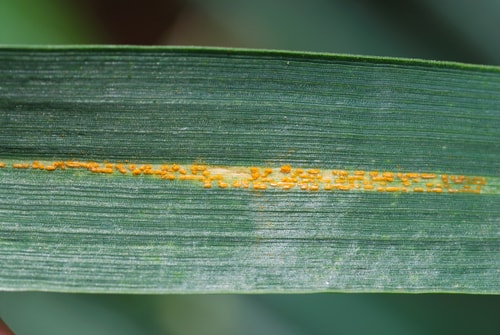In a report with Kansas Wheat, Jordan Hildebrand said stripe rust survives in climates that are humid and cool. He noted that the disease grows at its fastest between 50 and 60°F. It has a hard time thriving when temperatures reach around 68°F at night or after consecutive days of temperatures in the mid-80s.
While fungicides are an option, but farmers sometimes tend to adopt the wait and see method. Especially now when drought may impact yields and quality.
Erick DeWolf, a plant pathologist from Kansas State University suggests that if farmers are going to spray, to start with the fields that are expected to have the highest yields.
He said fungicides could be a solution if stripe rust is found on the upper leaves before heading. Lower leaves with signs of stripe rust may not need to be sprayed but should be closely monitored as the disease can spread quickly.
Earlier in 2015, researchers from Texas suggested there could be a stripe rust epidemic.
Join the conversation and tell us if you’ve ever had to battle stripe rust. If so what did you do and how did you prevent the disease from coming back?

Stripe rust